In any survival situation, the ability to heat water is paramount. You’ll need to heat water for cooking, for cleaning and also simply to sterilize it via boiling.
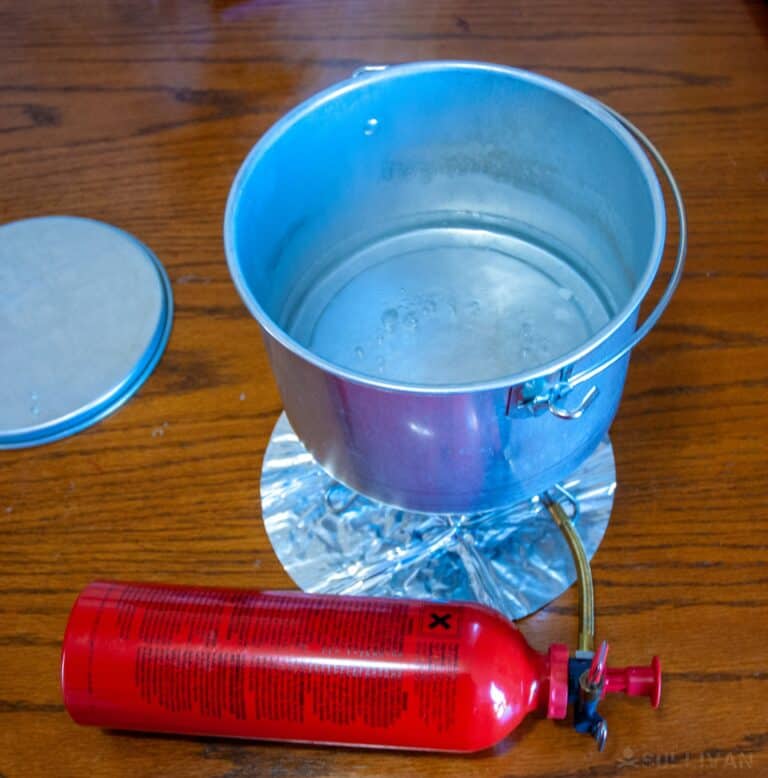
But, most serious disasters usually entail long-term or even indefinite power outages, greatly hampering your ability to heat water in your kitchen.
Knowing alternate methods for reliably and safely heating water might make the difference between life and death.
The good news is that no matter where you live and what the situation is, you’ll have at least a couple of methods you can put into practice straight away.
I’ll tell you about 12 proven methods for heating water below.
Table of Contents
1. Tea Light Candles
Tea light candles aren’t just for providing a cheery ambience or for gently heating containers of food in a buffet.
You can take about a dozen tea light candles, crowd them close together on a tray and then it suspend your pot of water over them on a rack and they can boil a couple of liters of water and as little as 10 minutes.
This might not be the most efficient use of the candles, but if they are all you have available they will definitely work and if you’re already relying on them for a little bit of area lighting or even some supplemental heat, this is a great approach.
2. Campfire
One of the oldest, best and still most accessible methods for rapidly heating water for any purpose is over a roaring campfire.
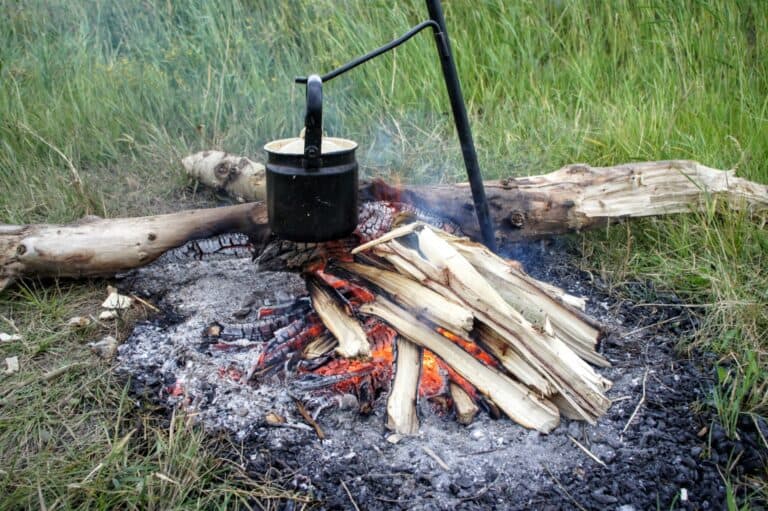
You can build your fire and suspend your container over it using a grate or rack for the purpose, or even hang it from a spit with a little bit of ingenuity.
Depending on the quantity of water you’re boiling it won’t take long, and make sure you’ve got something that will properly protect your hands when pulling the pot out of the fire!
Something else to keep in mind is that you don’t necessarily have to have a metal container to use this method.
Believe it or not, it is possible to boil water in a plastic bottle or earthenware vessel if you are cautious!
3. Hot Rock Method
An ancient method for rapidly boiling water is a good one to use when you’re in a serious hurry, have a sturdy metal container and a large quantity of water.
All you need to do is heat up a few large rocks directly in or very near your campfire before dropping them in the container of water.
Now, there are a few risks, namely that porous rocks that have absorbed a lot of moisture could explode when heated.
But so long as you have larger dry rocks for the purpose there shouldn’t be any problem, and they can boil even a few gallons of water almost instantly. As you’d imagine, you better have tongs for handling the rocks!
4. Camp Stove
Pretty much every prepper by now knows how to use a camp stove, and this is a great option for boiling water when in the field or when you don’t have any other option close at hand.
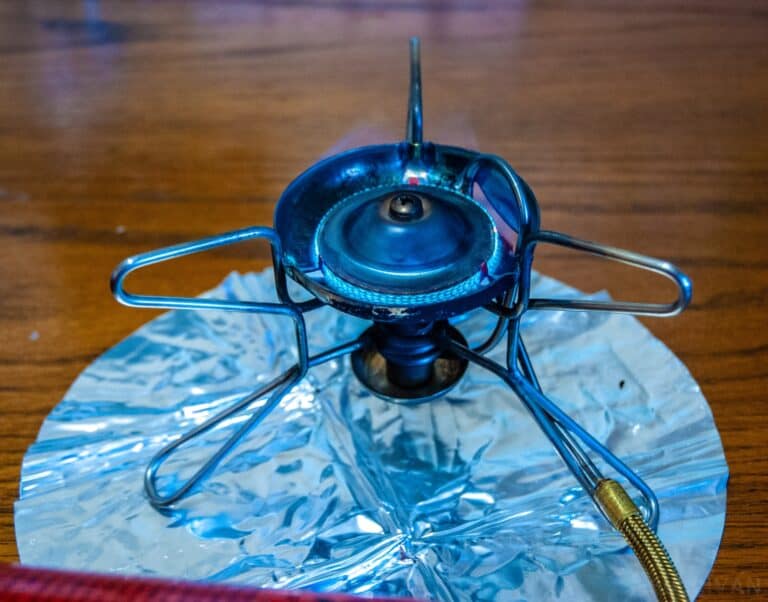
Whether you have a trusty old Coleman or a modern ultralight jet stove, you can place your mug or a small pot of water on one of these handy stoves and have it piping hot or boiling and just a few minutes.
Fuel supply, obviously, is the major concern when using these methods and most are not safe to use indoors either because the whole unit gets very hot or because they will emit hazardous combustion byproducts.
These issues are easily solved, however, and it’s definitely highly convenient.
5. Charcoal or Gas Grill
Pretty much every house in America has a backyard charcoal or gas grill that gets regular service in the spring and summer for cookouts, and this is not an option you should forget about if you need to boil water in the middle of a power outage or any other disaster that has put your kitchen out of action.
If you know how to use your grill, you already know what to do, just make sure the vessel itself is not vulnerable to melting or catching on fire.
This will pretty much limit you to metal once again, but with the grill roaring hot and the lid on you can quickly boil several liters. This is an especially good option if you already have the grill fired up for cooking food.
And, just a reminder, you should never, ever bring a gas or charcoal grill inside your home no matter what the weather is like outside: these things kill several people every year who try it, because they release tons of dangerous carbon monoxide when in use!
6. Alcohol Burner
Alcohol burners are used in all sorts of workshop and laboratory settings for heating beakers and other containers full of various liquids, and they’re also popular for use on boats and ships with cabins because they release very few harmful combustion byproducts, making them safer for enclosed spaces.
Obviously, you can use one for heating a pot of water with absolutely no concerns.
Alcohol burners have a few major advantages, and a couple of drawbacks. First, these things tend to run hot, really hot, and that means they can heat a lot of water to a roiling boil very quickly.
Second, as mentioned, compared to other types of fuels alcohol burners produce no smoke and precious little in the way of airborne contaminants. That’s a great thing from a safety perspective and also an air quality one.
However, the advantage of extreme heat and overall efficiency is also a drawback: many alcohol burners produce a flame that quite literally cannot be seen except as a faint shimmer, and they will also instantly ignite anything that is too close to them.
This means you must be doubly cautious to ensure that they are both extinguished and totally cool before you grab it or move it.
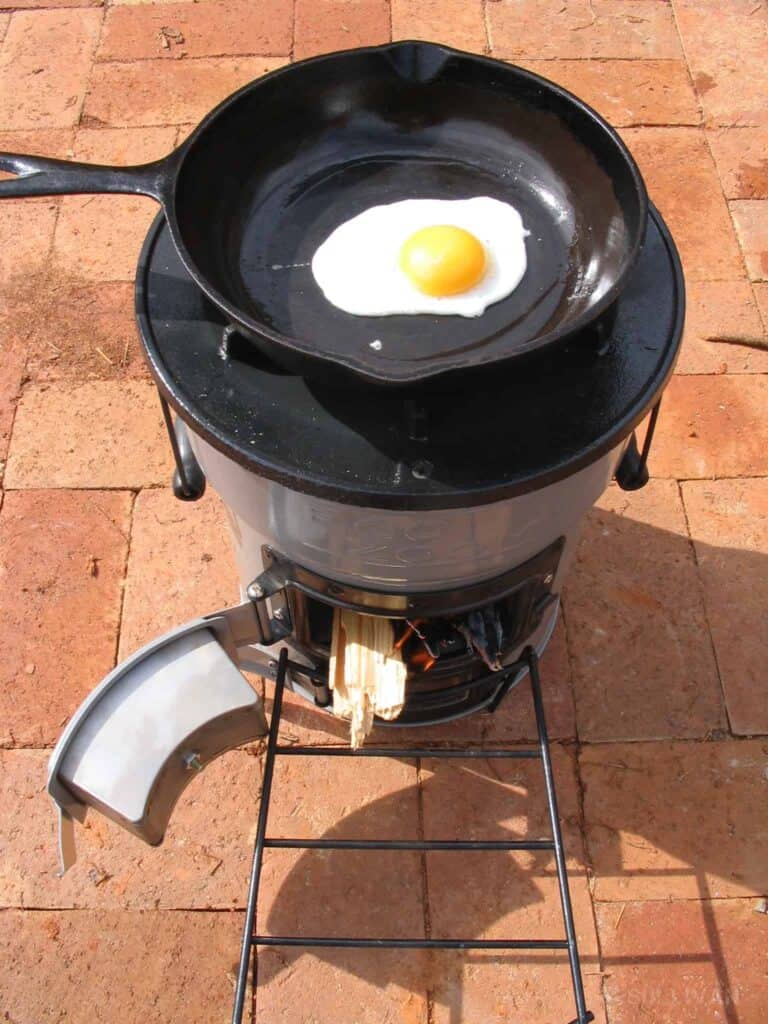
7. Rocket Stove
A rocket stove is not a brand of stove, but a type: these stoves are designed to use the heat of combustion to suck in air through a tunnel or intake to further feed the flames, greatly increasing the efficiency of combustion and thereby producing much more heat and far less smoke than a normal oven using the same fuel- typically wood.
The great thing about rocket stoves is that they are highly adaptable and easy enough to DIY even with primitive materials.
You can make a wonderful rocket stove simply by digging in the ground and placing a few rocks strategically, or you can purchase a prefabricated, portable above-ground version.
Either works wonderfully for all sorts of purposes, and they can boil a large quantity of water extremely quickly.
Believe it or not, some rocket stoves are also specially built next to large water storage containers and used as a proper water heater in austere environments or other kinds of fuel or electricity are just not available or not practical.
Truly, these stoves can be a prepper’s best friend in a variety of circumstances, not just when it comes to heating water. I highly recommend you look into both the operation and the design of these stoves and add that information to your survival toolbox.
8. Fireplace
Still one of the best ways to boil water indoors is also one of the oldest. A properly constructed and maintained fireplace is tried, true and very convenient in the absence of electricity or even an operational modern kitchen.
The only trick is figuring out how you’re going to place your container for safety and also easy access. If you do nothing else but place a kettle, pot, or another suitable container near the flames you can rest easy knowing it will heat up and eventually boil in fairly short order.
Covered containers can even be placed directly in the flames assuming you have something to safely retrieve it with.
In any case, you’ll need to think fast and have a plan for how you’re going to handle the container once you pull it out, but if you have a brick hearth, or a metal pot stand or hanger nearby you can simply set it there.
Remember that most cooking, to include boiling water, was done in or very near the fireplace prior to the advent of the modern kitchen!
9. Wood Stove
If boiling water in a fireplace just sounds like too much work you can try the same way that your great-grandma and great-grandpa probably did it.
Wood stoves are much safer to be near compared to fireplaces, and almost as effective when it comes to rapidly heating water.
Even better, many wood stoves have flat tops that are designed for cooking, that means you can just set your pot or kettle right on top and wait for it to heat up with no fuss and no muss.
Obviously, the efficacy of a wood stove is very much dependent upon its design, as you typically won’t be able to open up the combustion chamber and safely put a vessel inside. So if your wood stove does not have a flat top you’ll need to figure something else out.
You’ll find that many vintage wood stoves have a better design for this purpose than new and ultra-efficient ones, but with the resurgence in popularity of self-sufficiency modern designers are responding and once more designing wood stoves that have the benefit of advancements in materials and efficiency while also being capable of cooking or heating water on the top. The best of both worlds!
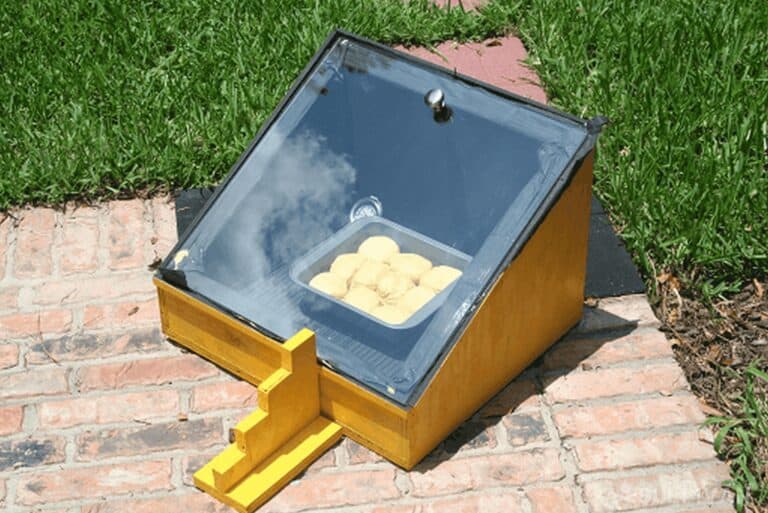
10. Solar Oven
If you don’t want to mess around with open flames or keeping fuel on hand, and you have the benefit of copious sunshine where you live, a solar oven might be the very best bet for heating water.
A solar oven does exactly what the name suggests: these devices use reflected or “captured” sunlight to heat up a container placed inside them.
Definitely an eco-friendly option and one that will ease the strain on your fuel budget, but you need not think these are last-ditch choices, either: a modern solar stove on a clear day placed to receive a full value sun is shockingly effective, and can boil water and as little as 20 minutes, maybe even faster in hotter areas.
These ingenious devices also have real utility for cooking food and other purposes.
But, it isn’t all good news. They are totally useless at night, and their effectiveness is directly tied to how much sun they are receiving.
That means a certain amount of babysitting is necessary to turn or reposition them to continually take full advantage of the sun as it travels across the sky.
Annoying, and potentially unreliable, but these are small prices to pay for this kind of capability that is only dependent on the limitless fuel of the nearest star.
11. Solar Shower Bag
Lots of long-haul campers and off-roaders are probably already familiar with this option. A solar shower can be thought of as a sort of solar-powered water heater, and at its simplest is nothing more than an opaque, dark-colored bag that can be hung up in direct sunlight to allow it to slowly heat the water within to a pleasant temperature.
This option is highly convenient and ready to buy over-the-counter, and it’s also an easy one to DIY, but it has distinct limitations.
Namely, a solar shower is never going to boil your water, meaning it will not get hot enough to kill off microscopic germs that might be in the water. It will get warm enough to provide you with a properly hot shower, or even prepare some hot beverages, though.
This means that any water you’re going to trust for preparing food or potentially using for sanitary or medical purposes must already be properly purified if you’re going to heat it in a solar shower.
Otherwise, it should only be used for non-potable purposes. Despite the shortcoming, solar showers are portable, convenient and they definitely work as advertised.
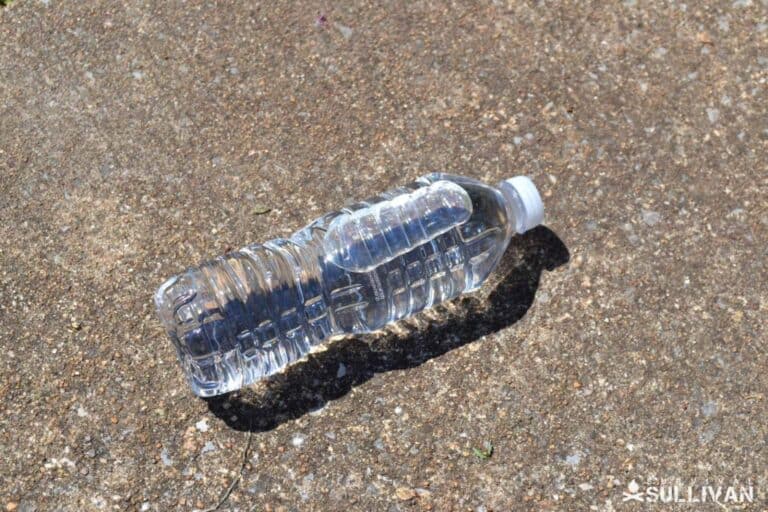
12. Bottle in the Sun
If you are really in a pinch, the only thing you need to do to heat up water is place a clear bottle full of it out in direct sunlight.
In a few hours, the water will be properly warm, and even though it won’t be boiled it’s also possible to use this technique to purify water by killing harmful microorganisms.
That’s because, even though the water isn’t reaching the boiling point, the constant UV bombardment from the sun will work to kill the germs.
There is a catch though: the water must be clear, or at least mostly clear, for this technique to be reliable. That means you’ll need to pre-filter the water as best you can.
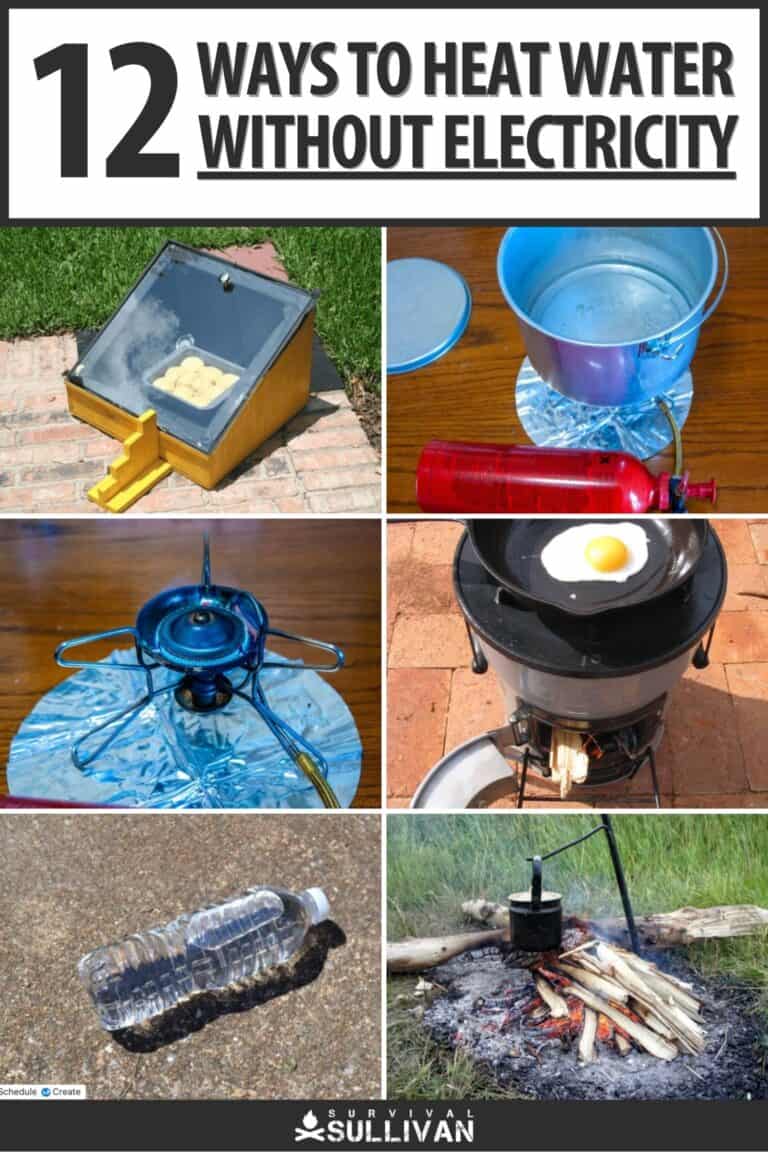

Tom Marlowe practically grew up with a gun in his hand, and has held all kinds of jobs in the gun industry: range safety, sales, instruction and consulting, Tom has the experience to help civilian shooters figure out what will work best for them.
